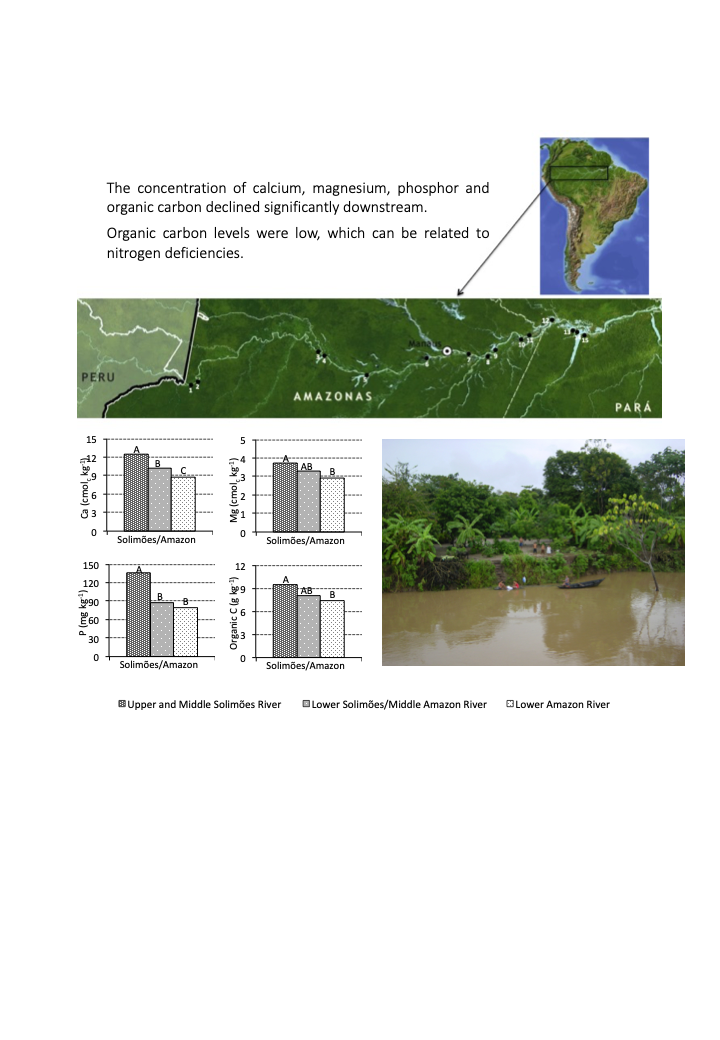Chemical features of floodplain soils under different land-uses in the Solimões/Amazon River basin
22/Jun/2022
ABSTRACT Most studies regarding the impacts of agricultural systems on soils of the Amazon region of Brazil have been carried out on upland soil, locally known as terra firme. Information regarding the impacts of different land-use systems on floodplain soil properties is still scarce. There is a need to broaden this knowledge to understand this Amazonian ecosystem better, especially how its soils respond to human interventions. This study aimed to describe the major chemical features of floodplain soils along the […]
Physical chemical and mineralogical characteristics of soils from the agricultural colony of Apiaú ( Roraima, Amazonia), under different land uses and after burning
01/Dec/2006
There are few studies on soils under slash-and-burn agriculture in settlements in Amazônia. The aim of this study was the soil characterization in the Apiaú Agricultural Colony, Roraima, and to evaluate changes in some soil chemical properties in function of the management systems and the impacts of burning to the soil properties. The studied areas were: pastures, cultivated with banana and maize, burned forest and natural forest. The samples were submitted to physical chemical and mineralogical analysis. The soils are […]
Mineralogy and chemistry of three soils along a topossequence from the Upper Solimões Basin, western Amazonia
01/Feb/2006
Little is known about chemical and mineralogical attributes of soils from the upper Amazon, compared with well-studied soils from the middle and lower Amazon. In the well-drained uplands of Upper Amazon, due to the Andes Cordillera proximity, soils are expected to be chemically richer. This work aimed to increase the knowledge of soils from the upper Amazon, by means of studying three soils along a typical topossequence at Benjamin Constant, near the Brazilian-Peruvian Border. These soils range from the uplands, […]
Nutrient and phytomass dynamics in a yellow Argissol under Amazonian tropical forest after burning and rice cultivation
01/Dec/2003
The system of shifting cultivation is one of the main agriculture models used in the State of Rondônia, as well as in other areas of the Brazilian Amazon. This paper aimed at na evaluation of the nutrient balance in the forest ecosystem after cutting down and burning the primary vegetation. After felling and burning the forest, an experiment was conducted to compare burned areas without cultivation (burned) to burned areas with cultivation of rice (cultivated). Furthermore, these areas were compared […]
Micropedological characterization of altered soils after bauxite mining in Porto Trombetas (PA)
01/Sep/2002
A micropedological study was carried out in rehabilitated soils after bauxite mining, in sites dating from 1981 to 1987, compared with the Yellow Latosol, as reference, to subsidize soil indicators of rehabilitation. The study was located in Porto Trombetas, district of Oriximiná, northwestern Pará State. Micromorphological techniques, using EDS/SEM microprobe, optical and scanning electronic microscopy, were used in combination with chemical and physical analysis, at 0-10 and 40-50 cm depths. The Yellow Latosol showed a strong development of microgranular structure, […]
Phosphorus extractants in Amazonian soils amended with phosphate fertilizers
01/Dec/1997
Aiming to evaluate the phosphorus availability in five Amazonian soil samples, amended with different phosphates, a pot trial was carried out under greenhouse conditions at the Centro de Energia Nuclear na Agricultura, Piracicaba (SP,Brazil), from october, 1993 to march, 1994, using the soils: medium texture Yellow Latosol, clayey Yellow Latosol, very clayey Yellow Latosol, clayey Red-Yellow Podzolic and very clayey Red-Yellow Podzolic. Four phosphate sources were applied (triple superphosphate, fine yoorin thermophosphate, granular yoorin thermophosphate and North Caroline rock phosphate) […]

